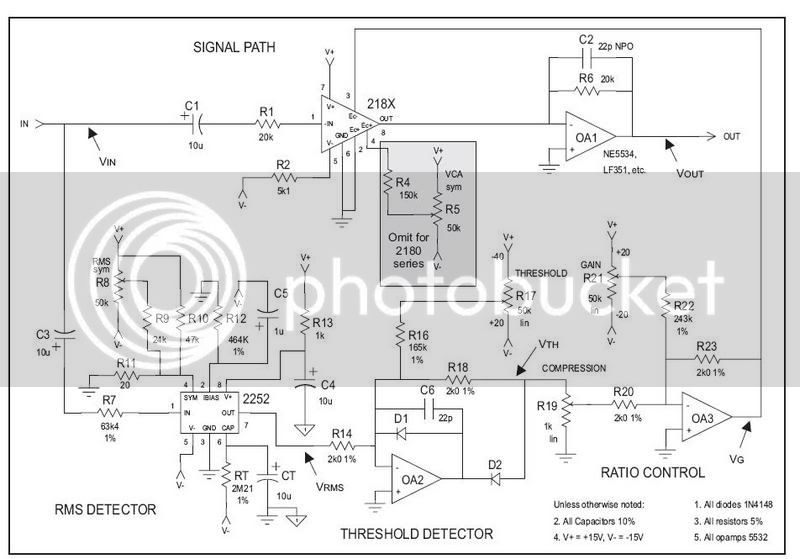Well first off i'd like to say im very glad to be a part of this forum. It took me months to register for some reason or something.?. So thanks to Wayne and Ethan for helping me out.
So i designed this compressor, i call the "Mini6", from the THAT application note AN100. Basically it uses the THAT2252 rms detector and the THAT2180 Vca. I have already etched a board but something was wrong cause the 2252 would get hot to touch. I think i found the problem, while getting it ready before posting i noticed a spot where ground was cut off from the rest of the board.
So i was hoping to get some board reviews, and input. Basically need some of the pro's to see if i missed anything.
If anyone is interested in making this compressor i will post the .brd files.
thanks
 [/img]
[/img]
 [/img]
[/img]
So i designed this compressor, i call the "Mini6", from the THAT application note AN100. Basically it uses the THAT2252 rms detector and the THAT2180 Vca. I have already etched a board but something was wrong cause the 2252 would get hot to touch. I think i found the problem, while getting it ready before posting i noticed a spot where ground was cut off from the rest of the board.
So i was hoping to get some board reviews, and input. Basically need some of the pro's to see if i missed anything.
If anyone is interested in making this compressor i will post the .brd files.
thanks




































